we are currently seeing the business world transformed by a microcomputer implementation called desktop publishing. ... it can be likened to having your own little printshop right on your desk. — mike saenz, 1988
color. vector drawing tools. page layout. 3d modeling. less than three years of rapid advances in technology allowed artist and graphics software pioneer mike saenz to follow up 1985's "shatter" — the first comic series created entirely on computer — with 1988's "crash", a full-length 63-page graphic novel featuring marvel comics' high-tech hero, the invincible iron man.
... however, today's off-the-shelf tools are still evolving and are not yet suitable for my own specific need: the ability to create professional quality film for color offset lithography. that capability is a tall order. but it can be done. crash is proof. ... the macintosh ii was forthcoming from apple at that time. it was generally known that the mac ii was a powerful, color, open architecture machine. this was vital to the concept. only with the emergence of the mac ii in the early summer of 1987 could i enlist the help of fellow associate william bates of knowledge engineering.
... i presented bill with a written and illustrated wish list of the program that i wanted for crash. from there, bill coupled my ideas with his and code that he'd developed over the course of two years. bill called the resulting program lithographer.
also, i enlisted the help of michael miller ... of umecorp ... a diversified research and development company which has developed such products as high tech toys to real-time expert system shells — the kinds of things tony stark would use. mike functioned as a technical consultant on the character iron man.
... finally, i enlisted the help of fellow comic artist pepe moreno. pepe is well known throughout europe and the u.s. his books, rebel, zeppelin, joe's air force and gene kong are much acclaimed.
rounding out saenz' software arsenal was a new type of drawing program called illustrator '88 and a dimensional modeler called pro 3d. the results were a futurist's wet dream narrated in glorious techobabble.
working in a commercial program that i co-developed called comicWorks (mindscape), i was able to create the 10 megabytes of bitmaps that compose a good 75% of crash. while comicWorks was designed to create black and white, low resolution comic art pages, it was used on crash as a dedicated bitmap editor/creator. using a selection of graphic tools that i designed into that program, i was able to do just about everything required for raw black and white bitmap entry. once imported into lithographer, we could color them. ... lithographer was written as a 32-bit program, stepping beyond the 256 color limit of color quickDraw (apple's graphic system for drawing color images on screen) and utilizing the full range of the mac ii's color capability for display: 16.8 million colors. lithographer can process black and white images into 24-bit color and allow the user to blend the images.
the resulting graphics are free of the jaggy-edged quality of low res bitmaps. the higher resolution and greater range of colors can fool the uninitiated into thinking that parts of crash were created by conventional means. this process can be seen on many pages in crash. it looks like oil painting.
a much more precise and memory conserving method of creating complex graphics is to use computer drawing tools. computer drawing involves designating points, lines and curves without being forced to render all of the bit data in between points. for the mac, adobe illustrator is such a program. using illustrator, i was able to create the crash cover, recreate marvel's S.H.I.E.L.D. logo (designed by bill sienkiewicz) and other graphics throughout crash. the result is black and white artwork with smooth and precise bezier curves and lines. ... while the results were very satisfying, due to the inherent time limitations of computer drawing input and output, i could not use this technique to create more graphics in crash.
using pro 3d (enabling technologies) for the mac, i built all of the 3d models required for the book. fury's osprey, stark's limosine, the robots, the shield levicarrier and others were created with pro 3d. using pro 3d's tools — which resemble a carpenter's lathe and jigsaw tools on screen — i was able to fashion the models and take "snapshots" of their various positions in a postscript file format. the pro 3d data was black and white so bill wrote code in lithographer that could import the data, display it, and allow me to compose it on the page and assign colors to it.
finally, lithographer automatically created 4 files for each page, one for each process color (cyan, magenta, yellow and black) and downloaded them to a linotronic 100 machine. the lino is a laser raster imaging device. it uses a small helium-neon laser to image and expose all of the millions of tiny dots directly onto black and white film. after proofing the film on a color proofing system, we could tell, and marvel's printer could tell, just how well the color separations came out. there really is no "original art" created for the production of crash. the entire book exists as magnetically encoded data on floppy disks. to my way of thinking, this is an advantage. that data is flexible and could be useful again some day.
(story, art and software design by mike saenz; art assist by pepe moreno; programming and software design by bill bates)
Monday, December 06, 2010
computer comix v2.0
Subscribe to:
Post Comments (Atom)
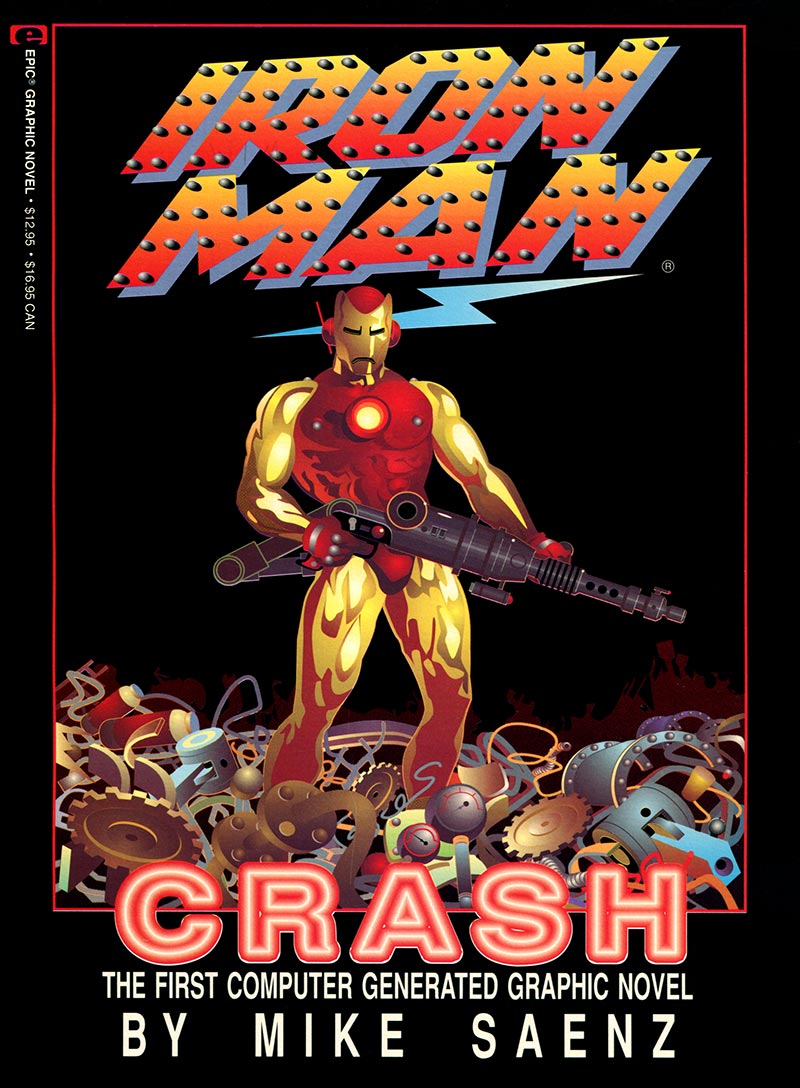
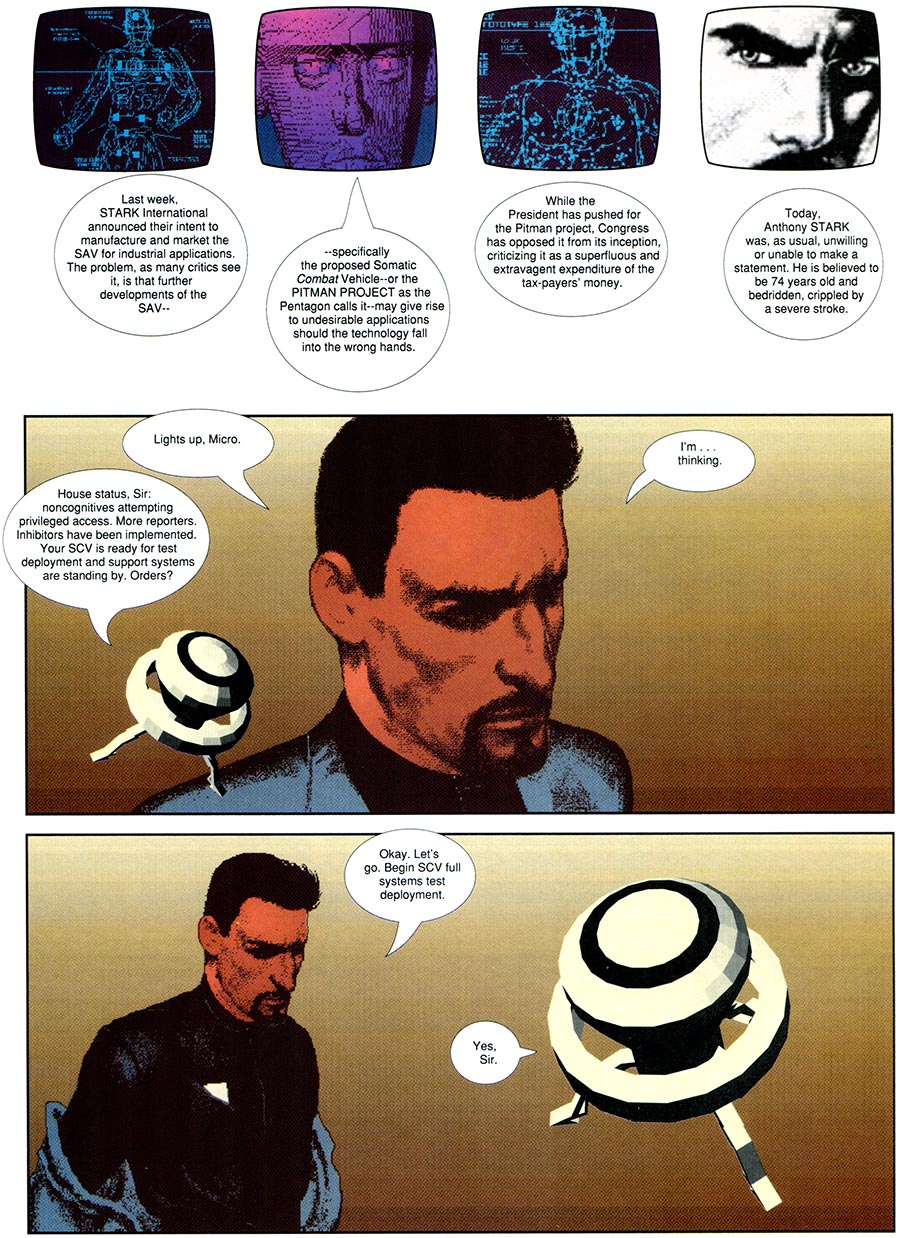


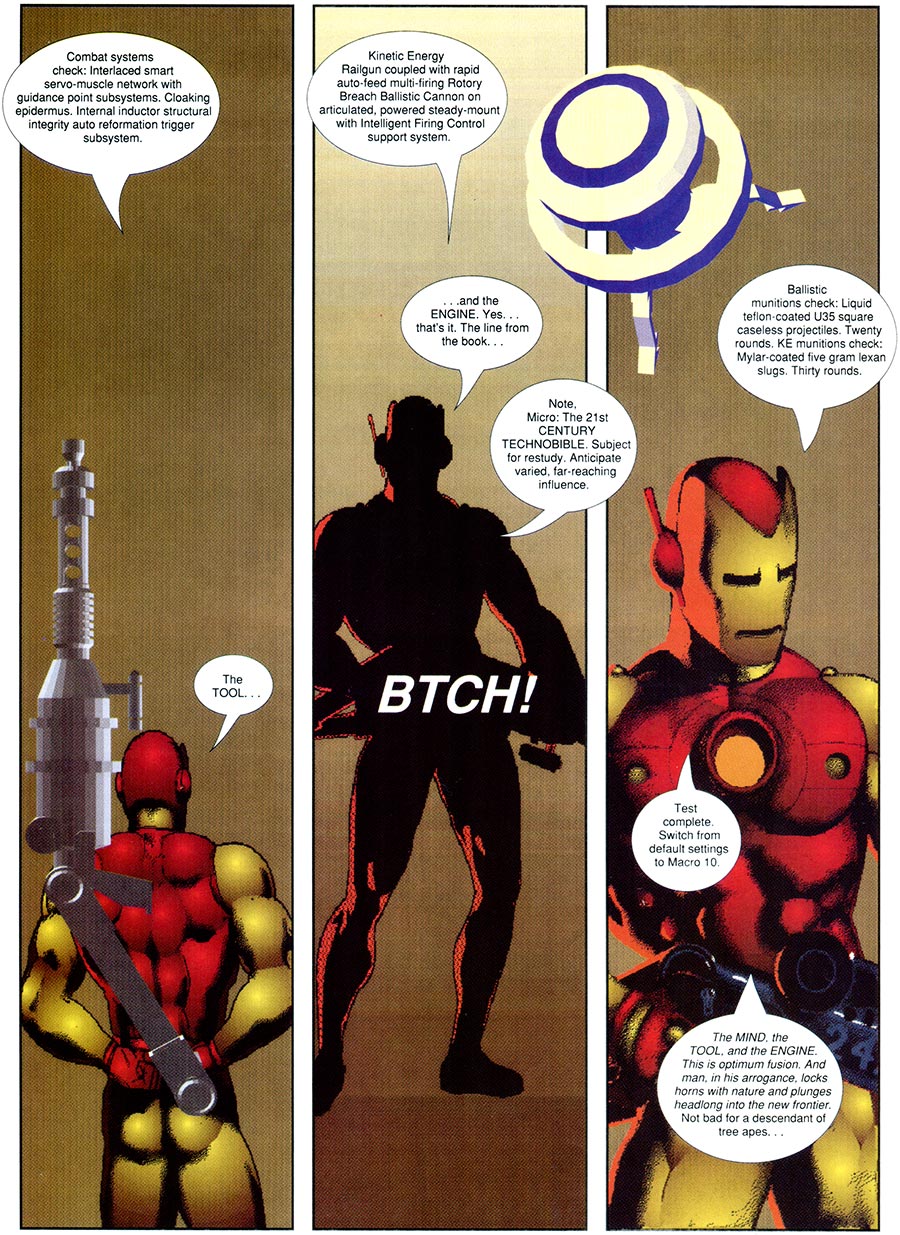


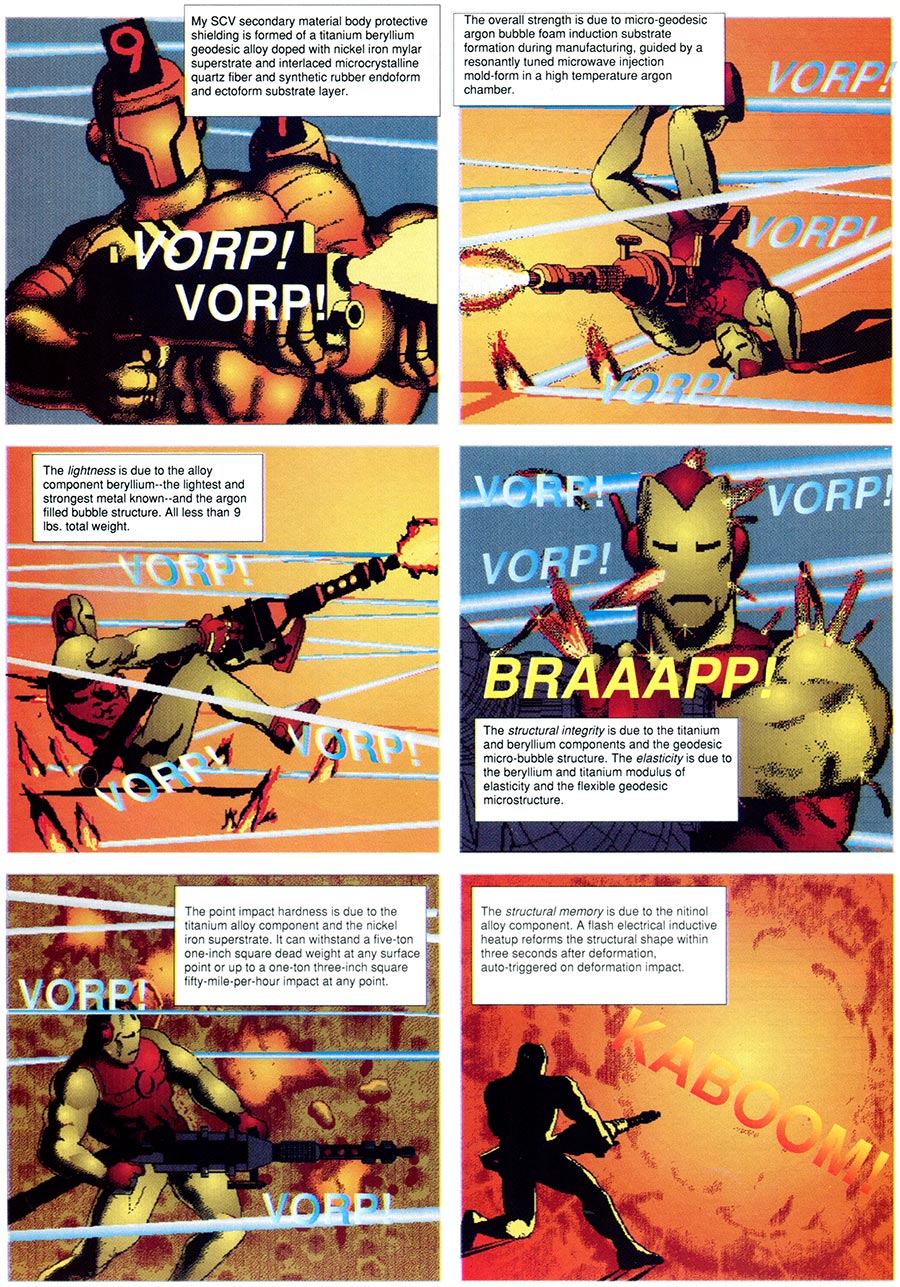
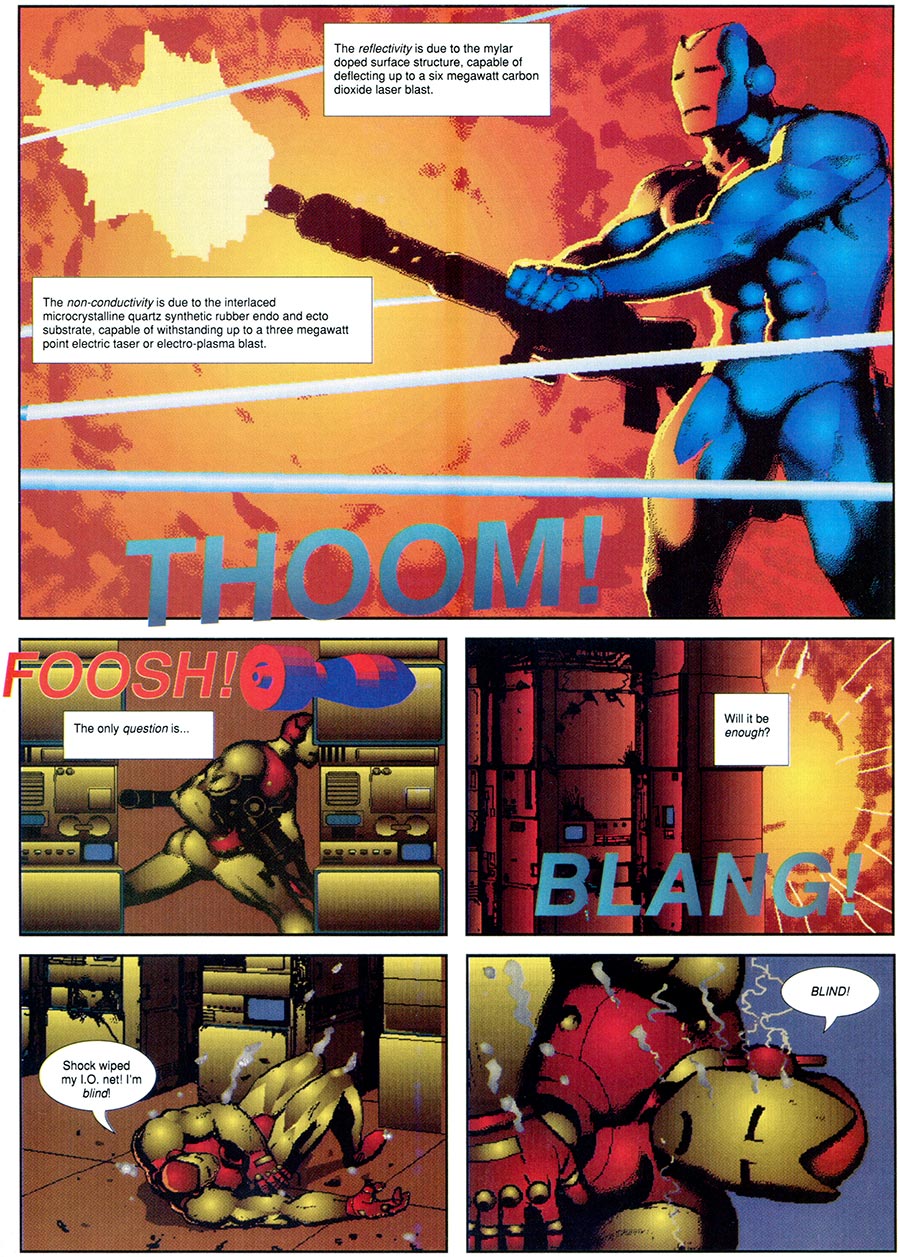














No comments:
Post a Comment